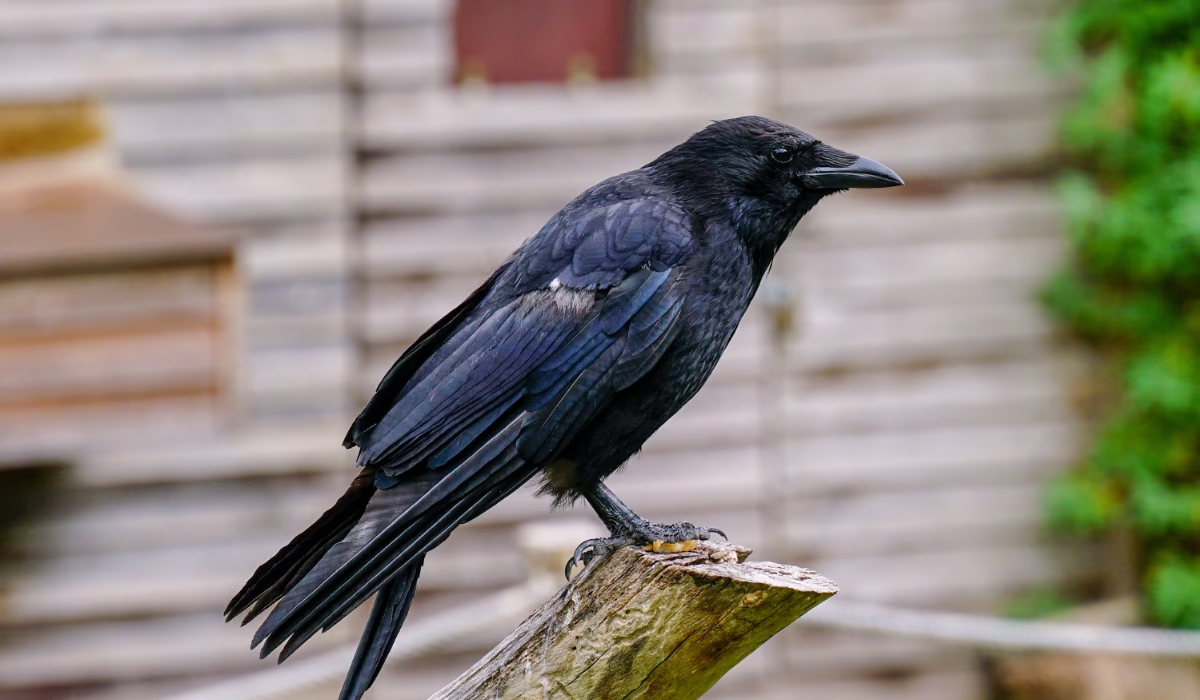Crows are intelligent and opportunistic birds that often take advantage of bird feeders because they offer an easy food source. While smaller songbirds may struggle to compete, crows can dominate feeding stations and displace other birds. Because they remember locations and adapt quickly, getting them to leave a feeder area often requires a combination of deterrents.
Choose Feeder Designs That Exclude Crows
One effective strategy is using feeders with features that physically block large birds while allowing smaller ones to feed. For instance, cages or guards around the feeder let small birds slip inside but prevent crows from accessing the seeds. Some feeders use weight-sensitive perches or smaller openings that crows cannot fit through. These design elements help maintain access for desirable birds while reducing crowding by crows.
Use Visual & Reflective Deterrents
Crows tend to avoid areas where they perceive danger or competition. Placing reflective or shiny objects near feeders — such as old CDs, aluminum foil strips, or mirror fragments — can create flashes or reflections that disorient them or signal an existing presence. Hanging decoy predators (like fake owls or hawks), especially if moved occasionally, can also discourage crows from approaching. These visual cues often work best when combined with other strategies.
Control Feeding Timing & Seed Types
Limiting when food is available helps reduce unwanted visitors. If feeders are only filled or accessible during times when crows are less active (for example late morning rather than dawn or dusk), there’s less opportunity for them to exploit the feeder. Additionally, choosing birdseed types less appealing to crows can help. Crows often favor peanuts, sunflower seeds, or large seeds — using alternatives like nyjer or safflower may make feeders less attractive to them.
Remove Attractants & Modify the Environment
Crows are drawn not only to feeders but to spilled seed, open trash, or other accessible food sources. Keep the area under and around feeders clean so there’s nothing on the ground to attract them. Consider placing feeders away from perching spots (trees, ledges) so crows have less advantage of jumping or swooping. Reducing cover or potential hiding places near the feeder can also discourage them from lingering.
Be Persistent & Rotate Strategies
Because crows are smart and can learn to ignore deterrents, success often comes from combining methods and changing strategies over time. What works one season may lose effectiveness if crows adapt. Regularly move decoys, reposition feeders, rotate reflective deterrents, or try new combinations to keep crows uncertain. Over time, they’ll often decide the effort isn’t worth it and shift elsewhere.
Conclusion
Keeping crows away from bird feeders is challenging but manageable through smart feeder design, visual deterrents, feeding control, and environmental changes. No single method works all the time, so the best results come from combining strategies and being persistent. With patience, you can reduce crow disturbance and create safer, more peaceful feeding for smaller birds.
FAQs
Can crows learn to bypass deterrents?
Yes. Crows are highly intelligent and can adapt to many static deterrents over time, which is why rotating or combining methods is important.
Will closing feeders overnight help?
It may reduce use during low-light conditions, but crows are opportunistic. Timing when feeders are open can help, but it’s rarely enough alone.
Can I scare crows away using sounds?
Sound deterrents (predator calls, distress calls) can be effective initially, but crows often habituate, so use them intermittently.
Is removing all feeders the only reliable way?
Removing feeders is a sure way to eliminate one attractant, but many crows also scavenge elsewhere — excluding them entirely may require addressing multiple food sources.
Are deterrents harmful to crows?
No — good deterrents work without harm. They rely on avoidance rather than injury.







